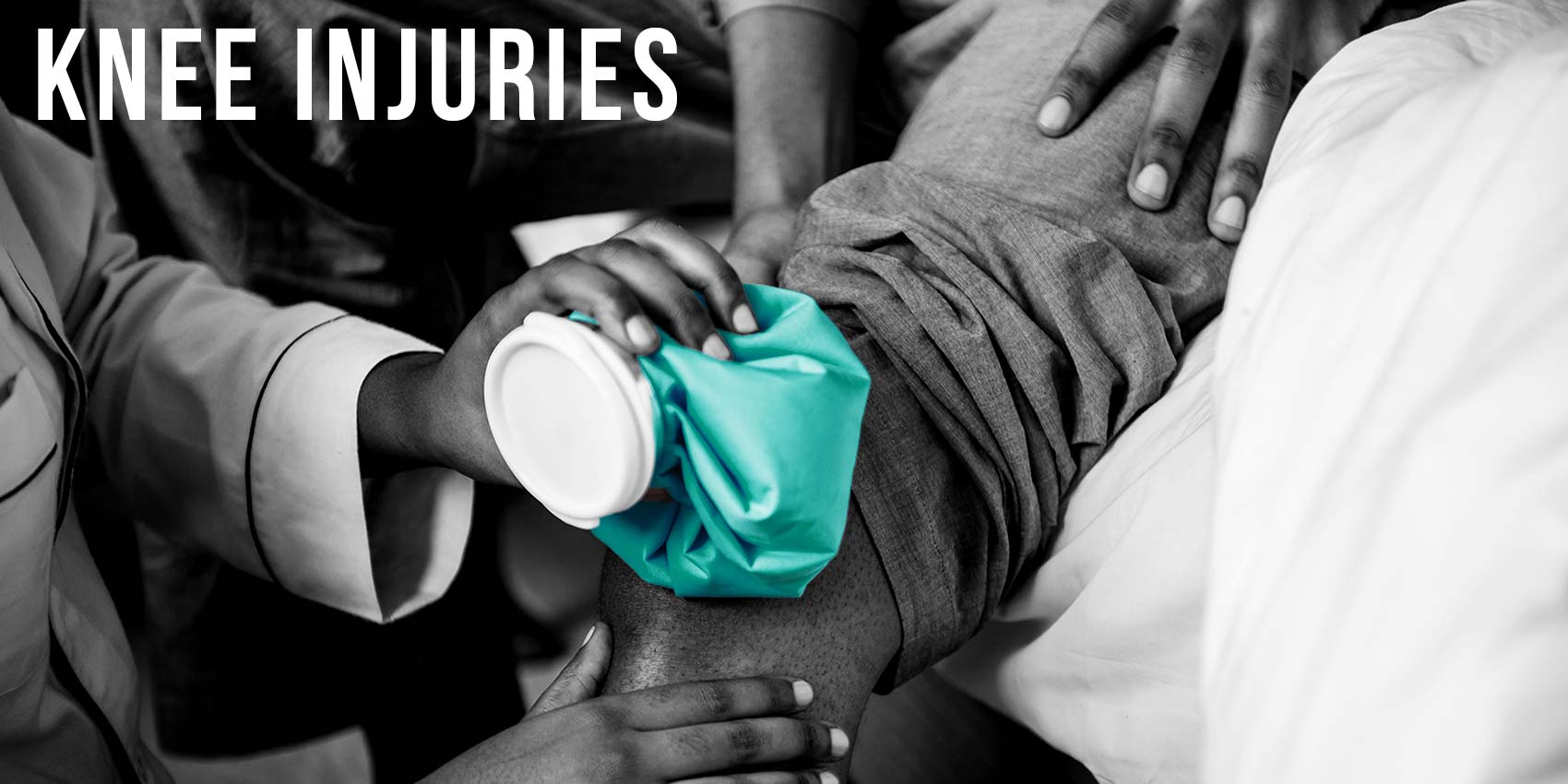21 Sep Knee injuries

Patella- Femoral Pain Syndrome, also referred to as PFPS, is the wearing away of the cartilage under the patella (kneecap) due to excessive rubbing of the patella on the femur. It presents as pain below and surrounding the patella or sometimes as a kneecap that sits higher than the patella on the other leg.
It’s caused by an imbalance of the muscles that control patella motion. Typically, the muscles on the outside of the knee are too tight and the muscles on the inside of the knee are too weak. But usually the muscle imbalance alone does not cause the pain. The pain typically only begins when the person is very active and overuses the knee. The pain occurs with more activity and running, as opposed to at rest.
But, rest is not actually the treatment. It’s just that you may not feel the pain in the patella at rest. The best treatment is proper and aggressive stretching of the tight muscles of the leg, specifically the ITB, hamstrings and the quadriceps. Stretching should become a regular part of any athlete’s program, especially before AND after any sporting event. Also, strengthening of the weaker muscles in the knees should be implemented (meaning, put into action, carried out), usually the VMO, that’s the part of your quadriceps just above your knee on the inside.

DID YOU KNOW? Before Title IX (1972), one in 27 girls played sports. Today the number of girls that play sports is two in five.
(Source: https://www.womenssportsfoundation.org/education/title-ix-and-the-rise-of-female-athletes-in-america/)

But you said girls are more prone to this than boys. Aren’t girls more flexible than boys? Shouldn’t that make them less likely to get hurt?
Wow, great observation Nicki, but more factors are involved than just flexibility. Boys and girls’ bodies are built differently.
Here are just a few ways how they differ:
- Higher levels of testosterone allow boys to add muscle and, without too much effort, get stronger.
- Girls, as estrogen increases, tend to add fat rather than muscle. In general, they have to train harder to get stronger.
- Girls have wider hips, thus making them more likely to be knock-kneed, an injury risk factor.
- Girls bend less through the knees and hips. They tend to land in a more upright position when they jump, so their bodies don’t absorb the impact as well.
(Source: Mr. Michael Sokolove, in the New York Times Magazine May of 2008)
These factors are also to blame for another related top 5 injury among women—one of the more serious ones—the ACL tear.
What is an ACL tear?
The ACL, or Anterior Cruciate Ligament, is a small rubber band-like fiber inside the knee that helps to stabilize the knee and prevent excessive forward movement of the tibia (lower leg bone) on the femur (thigh bone). A tear occurs from too much forward movement of the tibia either from a direct blow to the back of the lower leg or from planting the foot in front and then turning in the opposite direction when running.

DID YOU KNOW? ACL tears commonly occur in sports such as football and soccer because of the quick side-to-side motions demanded in these sports.
Typically an ACL tear is very painful and swelling will occur around the knee, which becomes unstable and can just buckle with walking. These are all signs that you need to see an orthopedist as surgery is highly recommended. The recovery from surgery is usually 6 months with regular physical therapy.
Unfortunately, rupture from a direct blow cannot be prevented. The odds of such a blow are greatly increased in contact sports such as football and soccer, as are the odds of tearing due to a planting and cutting action. But those odds can be greatly reduced by ensuring that the muscles in and around the knee are strong and flexible. Balancing exercises should also be regularly performed.

DID YOU KNOW? Bert Mandelbaum in Santa Monica has designed an ACL Prevention Program “PEP” and the initial results for females look very promising. The 20-minute program consists of strengthening, stretching and balancing exercises that reduced injury for his participants by 74%!! Astonishing!
(Source: https://la84.org/pep-program-study/)
Unfortunately, though, prevention programs are often difficult to implement. As Diane Watanabe in Santa Monica, points out “Coaches have to see a performance boost. Otherwise they won’t do it.” They won’t give up the practice time for injury prevention time.
But that makes no sense! If their players are getting injured, then their team will do poorly.

Welcome to the world of today’s super competitive sports. Just because kids are playing sports earlier, doesn’t mean it’s getting any safer. Pick-up games are less common and super-competitive teams more so. This leads to more serious injuries. Kids in competitive sports are being asked to play almost everyday. Thus, they wear down the same muscle groups everyday, meaning they have little time to recoup, repair or grow stronger. This multiplies the risk of getting hurt as does just playing more: You have more exposure to events that can cause you injury.

What is the most dangerous sport anyway? I bet it’s football.
Actually, it’s not but you will have to hit our next post to find out which sport it is….



Post Question:
Do you think sports have become too competitive? If so, what can you do about it?
Answer the post question here
What's being said